 What Are The Signs of Drain Pipe Corrosion That Necessitate A Survey
What Are The Signs of Drain Pipe Corrosion That Necessitate A Survey
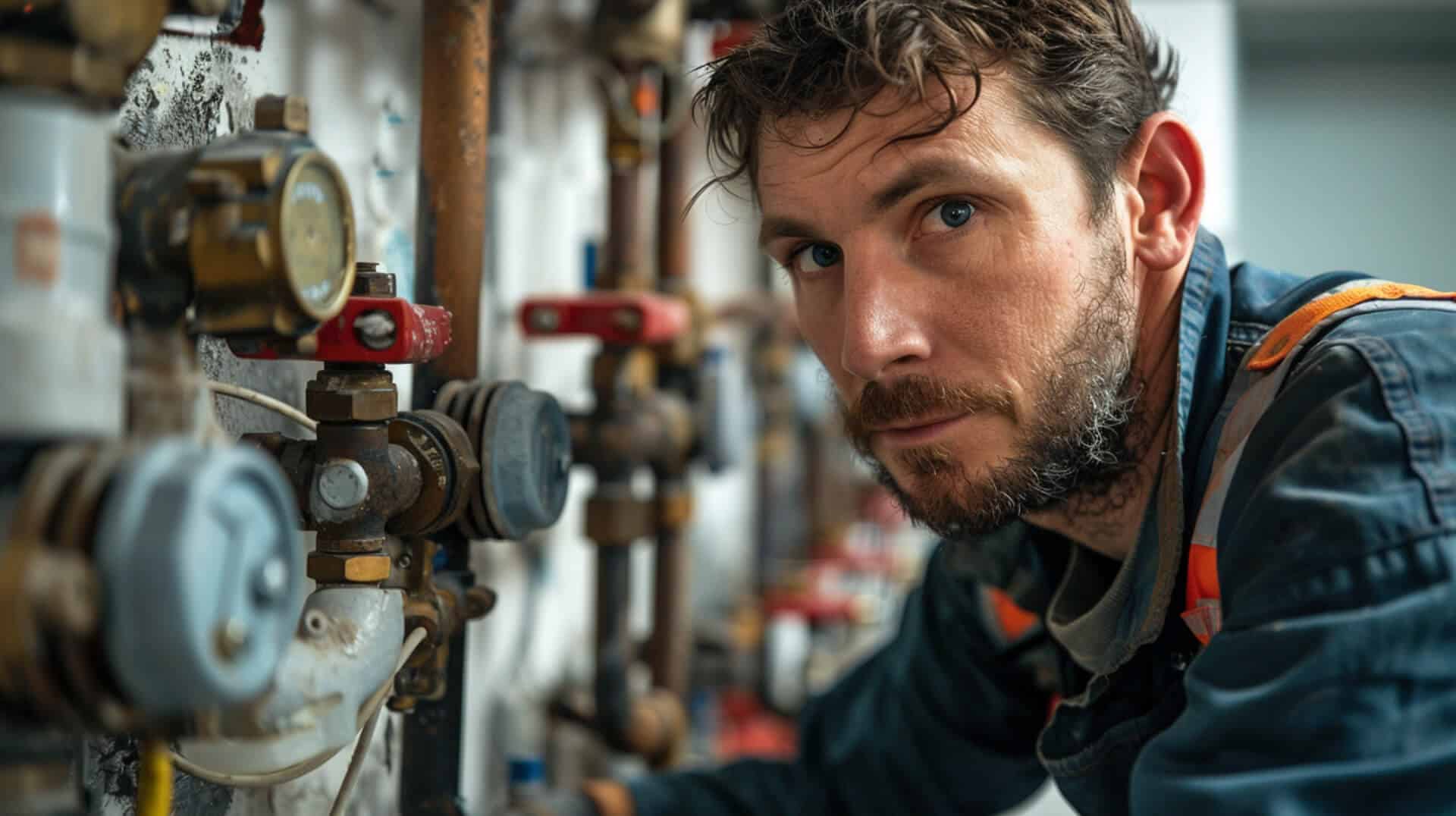
Drain pipe corrosion is a progressive deterioration of piping material, often leading to leaks, blockages, and water contamination. For property owners, understanding the signs and consequences of corrosion is crucial. It can affect the functionality and longevity of plumbing systems, potentially leading to costly repairs and replacements.
Why Property Owners Should Be Concerned
Corrosion in drain pipes can silently compromise the integrity of a plumbing system. If left unchecked, it may result in significant property damage, including water damage and mould growth, which are costly to remediate.
The Effects of Corrosion on Plumbing Systems
Over time, corrosion can narrow the internal diameter of pipes, reducing water flow and pressure. It can also cause pipes to become brittle and prone to cracking or bursting, which can disrupt the daily operations of a home or business.
Potential Risks and Costs
Ignoring the early signs of corrosion can lead to health hazards from contaminated water and increased liability from potential structural damage. The financial impact includes not only the immediate repair costs but also the long-term expenses associated with water loss and secondary damage.
The Necessity of Professional Surveys
A professional survey is essential for accurately diagnosing the extent of pipe corrosion. Experts use specialised equipment, such as CCTV cameras, to inspect pipes non-invasively and identify areas of concern. This early detection is key to preventing larger issues and ensuring the safety and functionality of the plumbing system.
Recognising Visible Signs of Corrosion in Drain Pipes
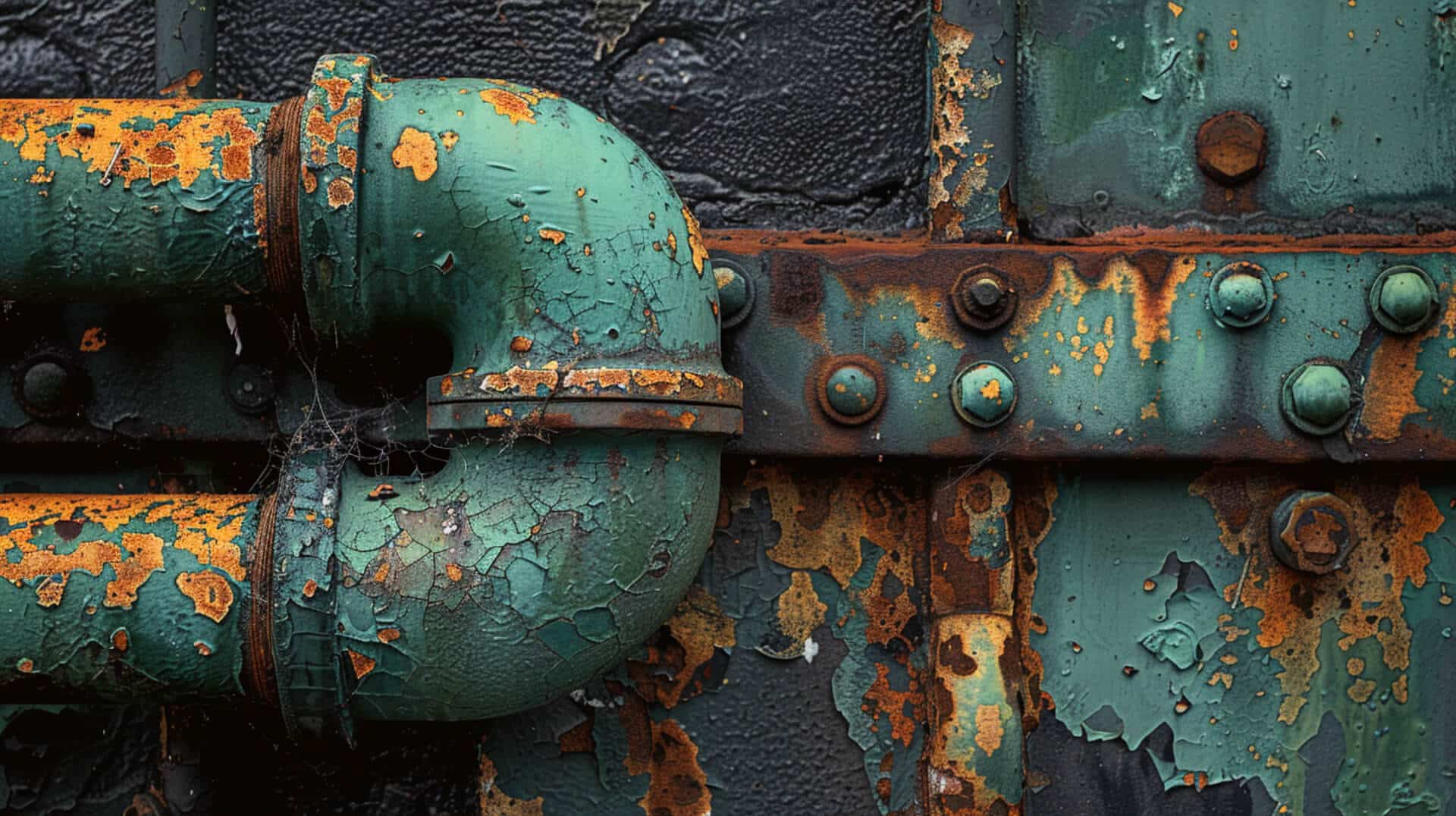
Corrosion in drain pipes can manifest through various visible signs that property owners should be vigilant about. Recognising these signs is crucial as they can indicate the need for a professional survey to assess the extent of the damage and necessary repairs.
Physical Changes Indicating Corrosion
One of the primary indicators of corrosion is discoloration of the pipes. If you notice areas of your pipes turning blue-green or red-brown, this could signify copper or iron corrosion, respectively. Additionally, the presence of rust or a brown/yellow covering on pipes often points to advanced stages of corrosion, which can compromise the structural integrity of the plumbing system.
Mould and Mildew as Warning Signs
The appearance of mould or mildew near pipe joints suggests excessive moisture, which is a common byproduct of corrosion. This moisture can create an environment conducive to mould growth, which not only affects the pipes but can also pose health risks to the occupants of the property.
Guiding the Decision for a Survey
Visible signs of corrosion serve as a clear signal that a more in-depth examination of the plumbing system is warranted. When these signs are detected, it is advisable to conduct a professional plumbing survey. Such a survey can reveal the full scope of the issue, allowing for informed decisions on maintenance or replacement, and preventing further damage to the property.
Sensory Indicators: Odour, Taste, and Water Discoloration
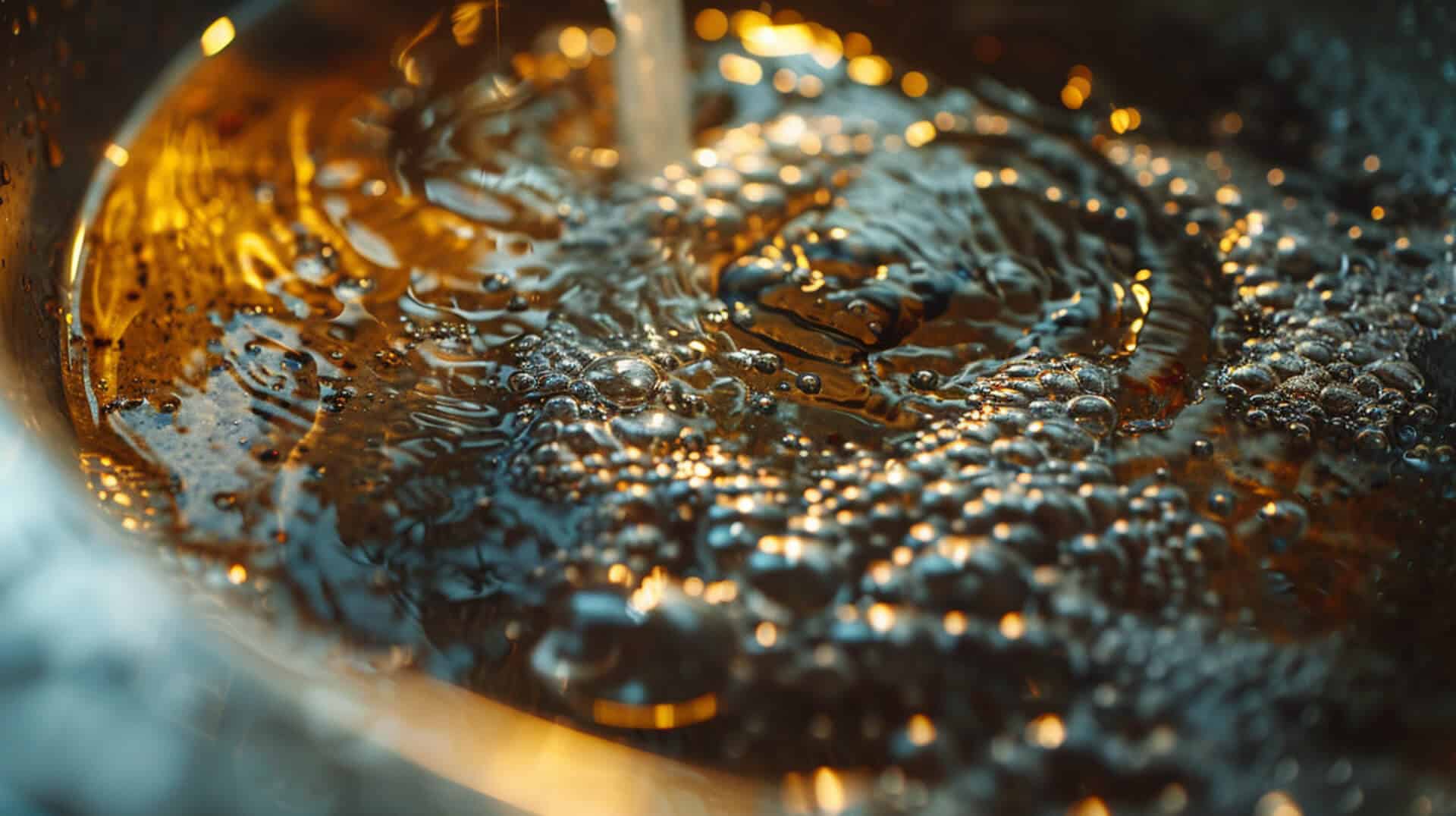
When assessing the condition of drain pipes, sensory indicators such as odour, taste, and water discoloration can provide critical clues about the presence of corrosion.
Unusual Odours from Drains
An unusual odour emanating from your drains can be a telltale sign of pipe corrosion. If you detect a persistent sulphurous or metallic smell, it may indicate that the pipes are deteriorating and releasing substances into the water that cause these odours.
Metallic Taste in Water
A metallic taste in your tap water often suggests that metal ions from corroded pipes are leaching into the water supply. This taste can be a clear indicator that the integrity of the pipes may be compromised and should be investigated further.
Rusty or Discoloured Water
The appearance of rusty or discoloured water is a definitive sign of corrosion within the plumbing system. This discoloration is typically due to rust particles from corroded iron pipes or the byproducts of copper pipe corrosion.
Necessity of a Professional Plumbing Survey
These sensory indicators are strong signals that a professional plumbing survey is necessary. Such a survey can accurately diagnose the extent of the corrosion and the condition of the pipes, ensuring that any necessary repairs or replacements are identified and addressed promptly.
Functional Symptoms and Their Implications
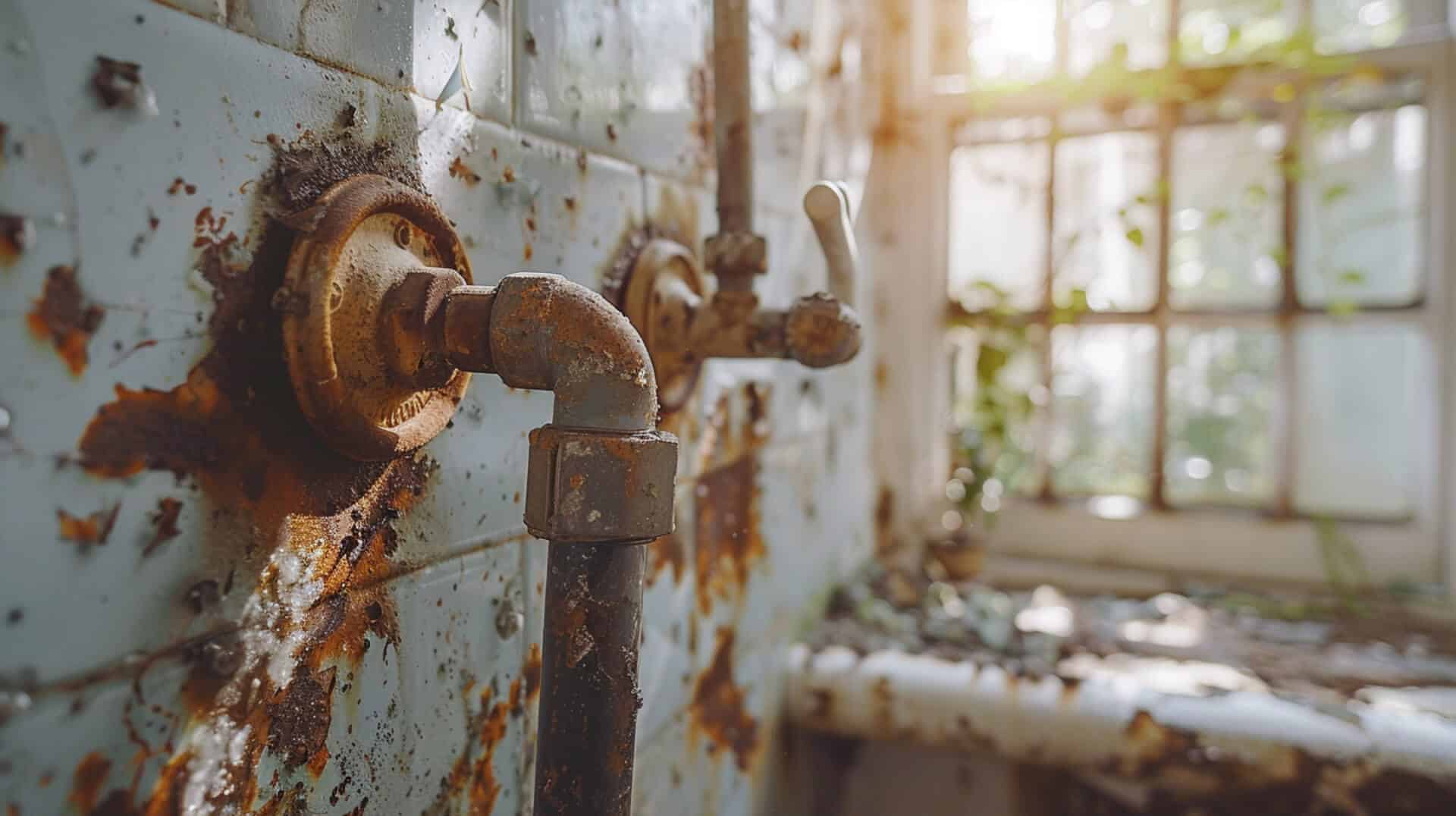
Understanding the functional symptoms of drain pipe corrosion is essential for maintaining the integrity of your plumbing system. These symptoms not only indicate the current state of the pipes but also signal the potential need for a professional survey.
Reduced Water Flow and Pressure
Reduced water flow and pressure can be symptomatic of corrosion within pipes. Corrosion can cause narrowing of the pipe’s interior, restricting water movement and reducing pressure. If you’re experiencing these issues, it may suggest that the pipes are corroded and require further examination.
Clogs and Leaks
Frequent clogs and leaks are often red flags for corroded pipes. Corrosion can lead to the buildup of rust and other debris, which can cause blockages. Leaks may occur as the pipe’s material weakens, leading to cracks or holes. These issues are clear indicators that a survey is necessary to prevent more severe damage.
Strange Noises from the Plumbing System
Unusual sounds, such as strange noises coming from the plumbing system, can also be a sign of corrosion. These noises might include banging, whistling, or gurgling sounds that occur when water flows through compromised pipes.
Necessitating a Professional Survey
When these functional symptoms are present, they collectively point to the necessity of a professional plumbing survey. Such a survey can provide a comprehensive assessment of the plumbing system’s condition, allowing for informed decisions on corrective measures to ensure the system’s functionality and longevity.
Understanding the Causes of Drain Pipe Corrosion
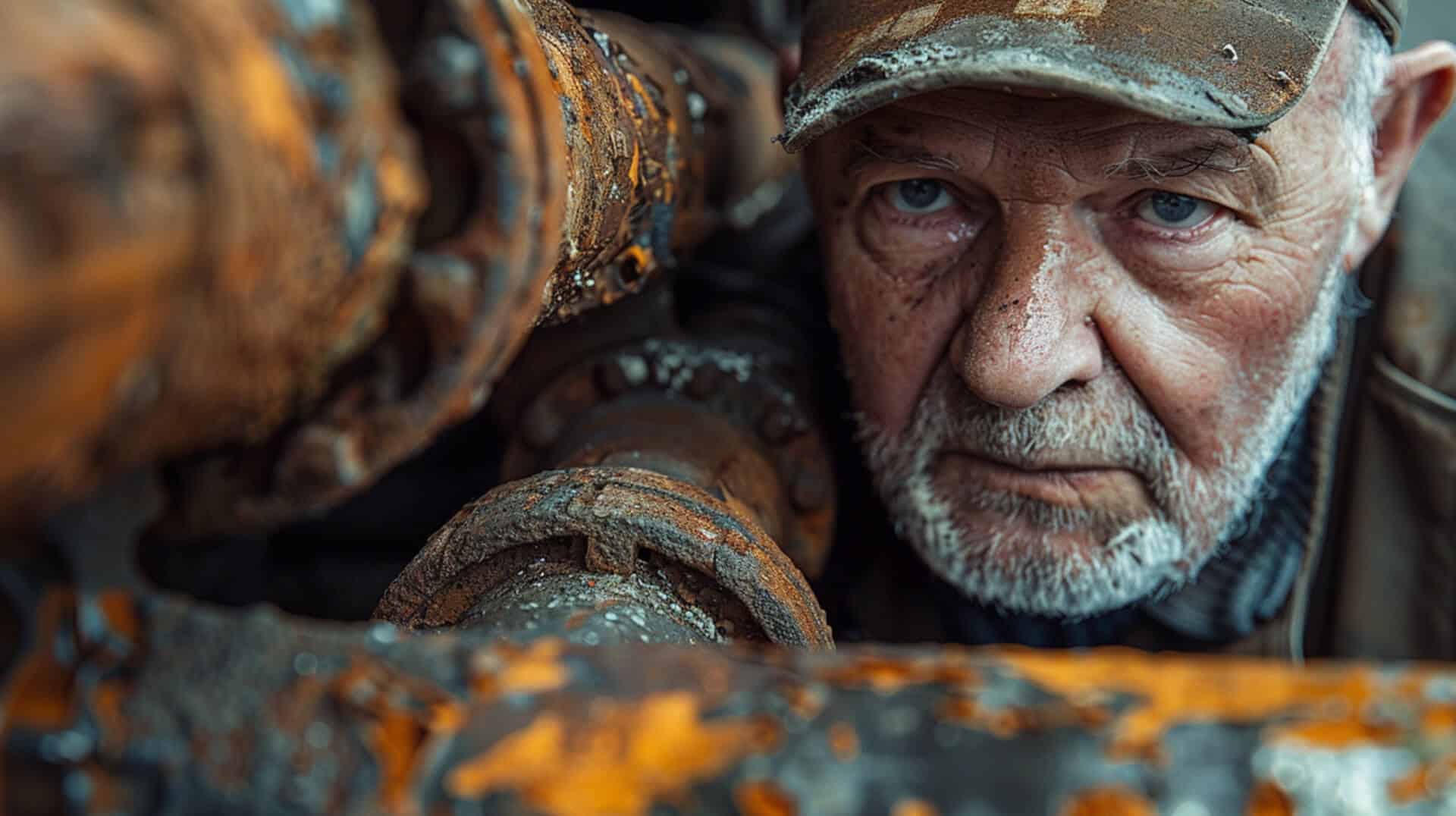
Corrosion in drain pipes is a multifaceted issue influenced by various environmental and physical factors. Understanding these causes is pivotal for property owners to identify the need for a comprehensive corrosion survey.
Environmental Factors and Chemical Exposure
Exposure to certain environmental factors plays a significant role in the corrosion process. This includes the presence of moisture and oxygen, which can accelerate the chemical reactions leading to corrosion. Additionally, chemical exposure from household cleaners or industrial waste can exacerbate the deterioration of pipe materials.
Water Quality Issues
Water quality is a critical factor in pipe corrosion. A pH imbalance in water, whether too acidic or too alkaline, can lead to aggressive corrosion of metal pipes. Similarly, hard water, which contains high levels of minerals like calcium and magnesium, can precipitate and form scale, leading to pipe corrosion over time.
Physical Factors
Physical factors such as temperature and water velocity also contribute to corrosion. High temperatures can increase the rate of chemical reactions, while high water velocity can cause physical wear and erosion on the pipes’ interior surfaces.
The Need for a Corrosion Survey
These factors collectively underscore the importance of conducting a comprehensive corrosion survey. Such a survey can help you understand the specific causes of corrosion in your plumbing system and guide the development of targeted strategies to mitigate and manage the issue effectively.
Health and Safety Risks Associated with Corroded Pipes
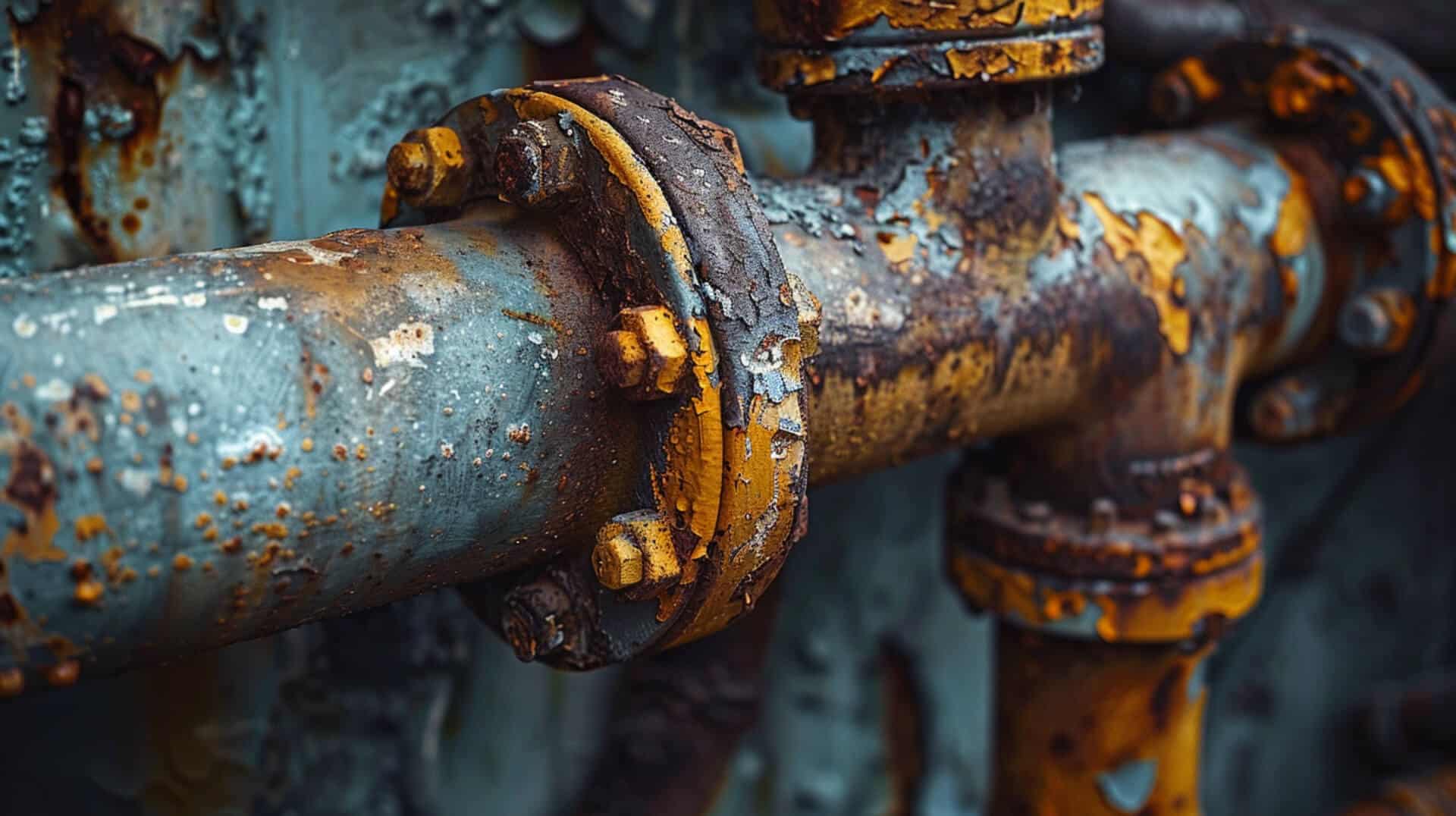
Corroded drain pipes pose significant health and safety risks that necessitate thorough understanding and prompt action.
Potential Health Hazards from Contaminated Water
Corrosion can lead to the contamination of water with harmful metals and bacteria, posing serious health risks. If you notice a change in water quality, such as discoloration or an unusual taste, it may be prudent to consider a survey to assess the safety of your water supply.
Structural Safety Risks from Leaks
Leaks resulting from corroded pipes can cause considerable damage to the structure of a building. Persistent moisture can weaken building materials, leading to costly repairs. It is essential to address any signs of leaks promptly to maintain the integrity of your property.
Importance of Addressing Corrosion for Health and Safety
The health of the occupants and the safety of the structure are paramount. Addressing corrosion proactively can prevent the escalation of these risks. A professional survey can identify the extent of corrosion and the necessary steps to mitigate these risks.
Survey as a Preventative Measure
Understanding the health and safety implications of corroded pipes underscores the importance of a professional survey. Such an assessment can serve as a preventative measure, ensuring the longevity of your plumbing system and the well-being of all occupants.
Effective Detection and Diagnosis Strategies
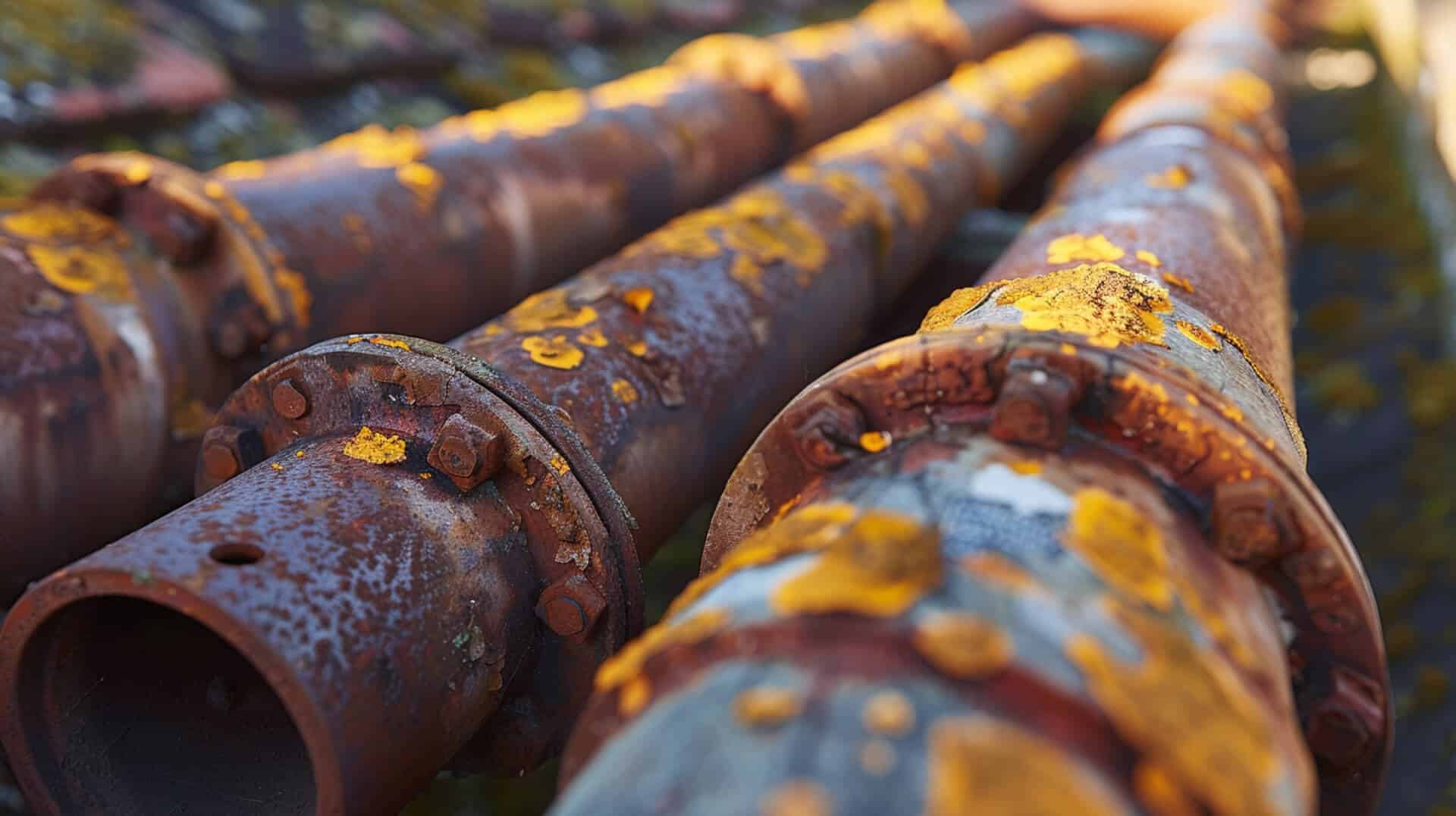
Detecting and diagnosing drain pipe corrosion requires a combination of observational skills and technological tools. Property owners, business owners, and facility managers should be aware of the following strategies to effectively identify corrosion in plumbing systems.
The Role of First-Draw Water Tests
First-draw water tests are a simple yet effective method for detecting corrosion. By analysing the first water drawn from a tap in the morning, you can assess the presence of metals like copper and iron, which may indicate pipe corrosion. These tests are a preliminary step in determining whether further investigation is necessary.
Utilising CCTV Drain Surveys for Accurate Identification
CCTV Drain Surveys offer a non-invasive way to visually inspect the interior of drain pipes. This technology can accurately identify the extent of corrosion and other structural issues within the pipes. The high-resolution cameras provide clear images, allowing for a detailed assessment without the need for immediate excavation or deconstruction.
Importance of Exterior Pipe Inspection
Regular exterior pipe inspection is critical for early detection of corrosion. Visual inspection of exposed pipes can reveal signs of corrosion such as discoloration, flaking, or pitting. This hands-on approach complements technological methods and can guide the decision to conduct a more comprehensive survey.
Informing the Decision to Conduct a Survey
These detection strategies collectively inform the decision to conduct a professional plumbing survey. By combining first-draw water tests, CCTV Drain Surveys, and exterior inspections, you can gain a holistic understanding of the plumbing system’s condition and take informed action to address any identified corrosion.
Preventative Measures to Minimise Corrosion Risk
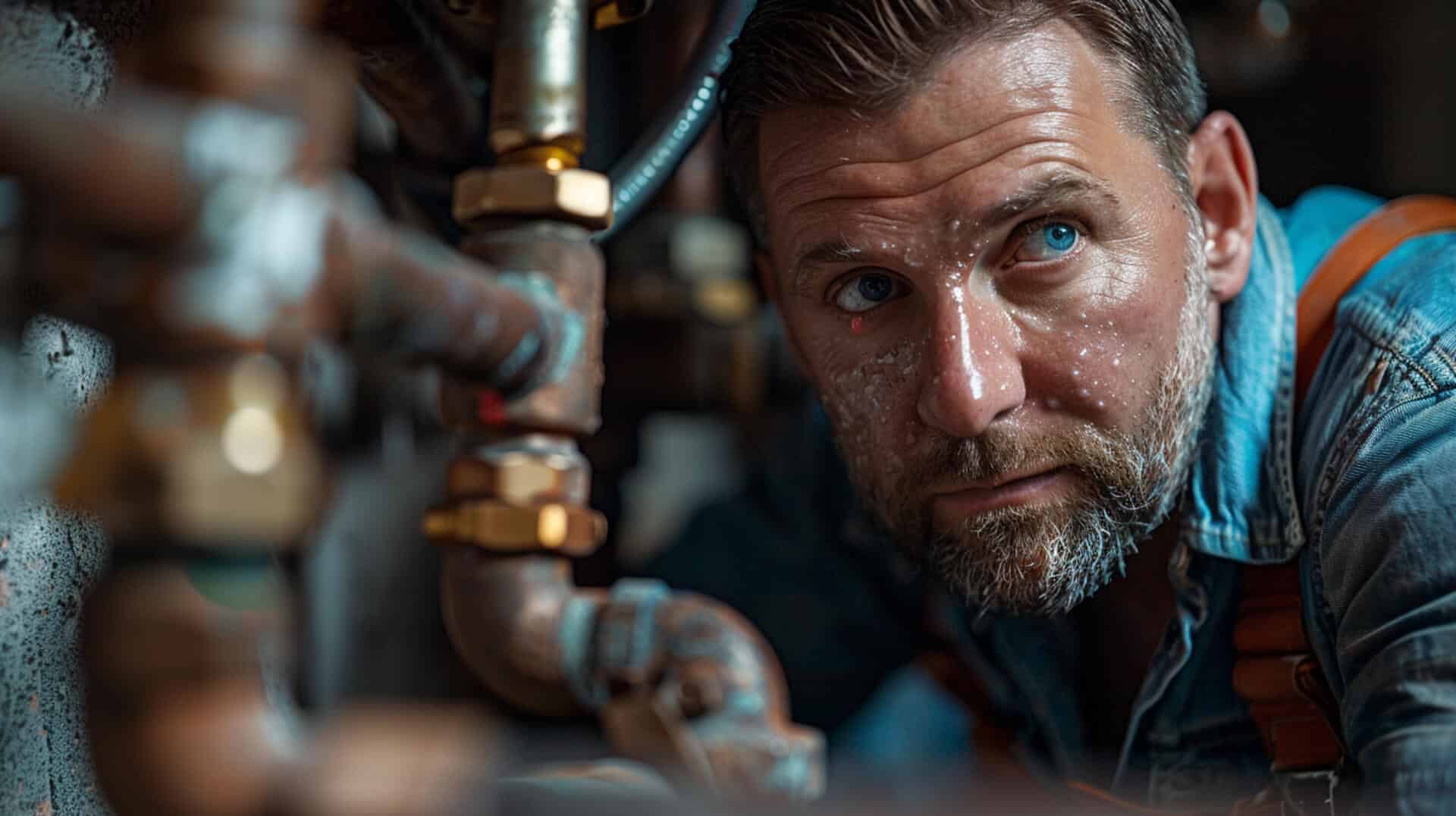
Implementing preventative measures is key to minimising the risk of drain pipe corrosion. Regular monitoring and maintenance, along with the use of appropriate materials and chemicals, can significantly extend the life of your plumbing system.
Regular Monitoring and Maintenance
Regular monitoring and maintenance are essential to prevent corrosion in drain pipes. This includes:
- Conducting periodic inspections for any signs of corrosion or damage.
- Scheduling annual professional check-ups to ensure the plumbing system is in optimal condition.
- Implementing a routine cleaning schedule to prevent the buildup of substances that can accelerate corrosion.
Utilisation of Corrosion-Resistant Materials
Choosing corrosion-resistant materials for pipes and fixtures can greatly reduce the likelihood of corrosion. Materials such as copper, PVC, and PEX are known for their longevity and resistance to corrosive substances, making them a wise choice for new installations or replacements.
Avoiding Harsh Chemicals
To maintain the integrity of your pipes, it is advisable to avoid the use of harsh chemicals for cleaning or unclogging drains. These substances can cause deterioration of pipe materials over time. Instead, opt for gentler, eco-friendly alternatives or mechanical methods for clearing blockages.
Impact on Future Surveys
By adopting these preventative measures, you can reduce the frequency and need for future plumbing surveys. Proactive maintenance not only preserves the condition of your plumbing system but also offers peace of mind by mitigating potential health and safety risks associated with corroded pipes.
The Critical Role of Professional Plumbing Surveys
Professional plumbing surveys play an indispensable role in the maintenance and longevity of plumbing systems. They are essential for accurate diagnosis and the formulation of effective solutions.
Timing for Conducting Plumbing Surveys
Property owners should consider a professional plumbing survey when signs of corrosionsuch as discoloration, unusual odours, or leaksare evident. Additionally, if water quality tests indicate abnormal results, or if there is a significant decrease in water pressure, a survey becomes imperative.
Preventing Larger Issues Through Early Detection
Early detection of corrosion through professional surveys can prevent larger, more costly issues. By identifying problems at an early stage, you can avoid extensive damage that might lead to expensive repairs or complete pipe replacements.
Essential Nature of Professional Surveys for Diagnosis
Professional surveys are essential for an accurate diagnosis of plumbing issues. Experts use specialised equipment, such as CCTV cameras, to inspect pipes internally, ensuring that all areas of concern are thoroughly examined and correctly identified.
Value Added by Professional Expertise
The expertise of professionals adds significant value to the survey process. Their knowledge and experience enable them to interpret survey data accurately, recommend the most effective solutions, and ensure that any interventions comply with current standards and regulations. This expertise is crucial for maintaining the safety and functionality of your plumbing system.
Solutions for Managing and Mitigating Corrosion
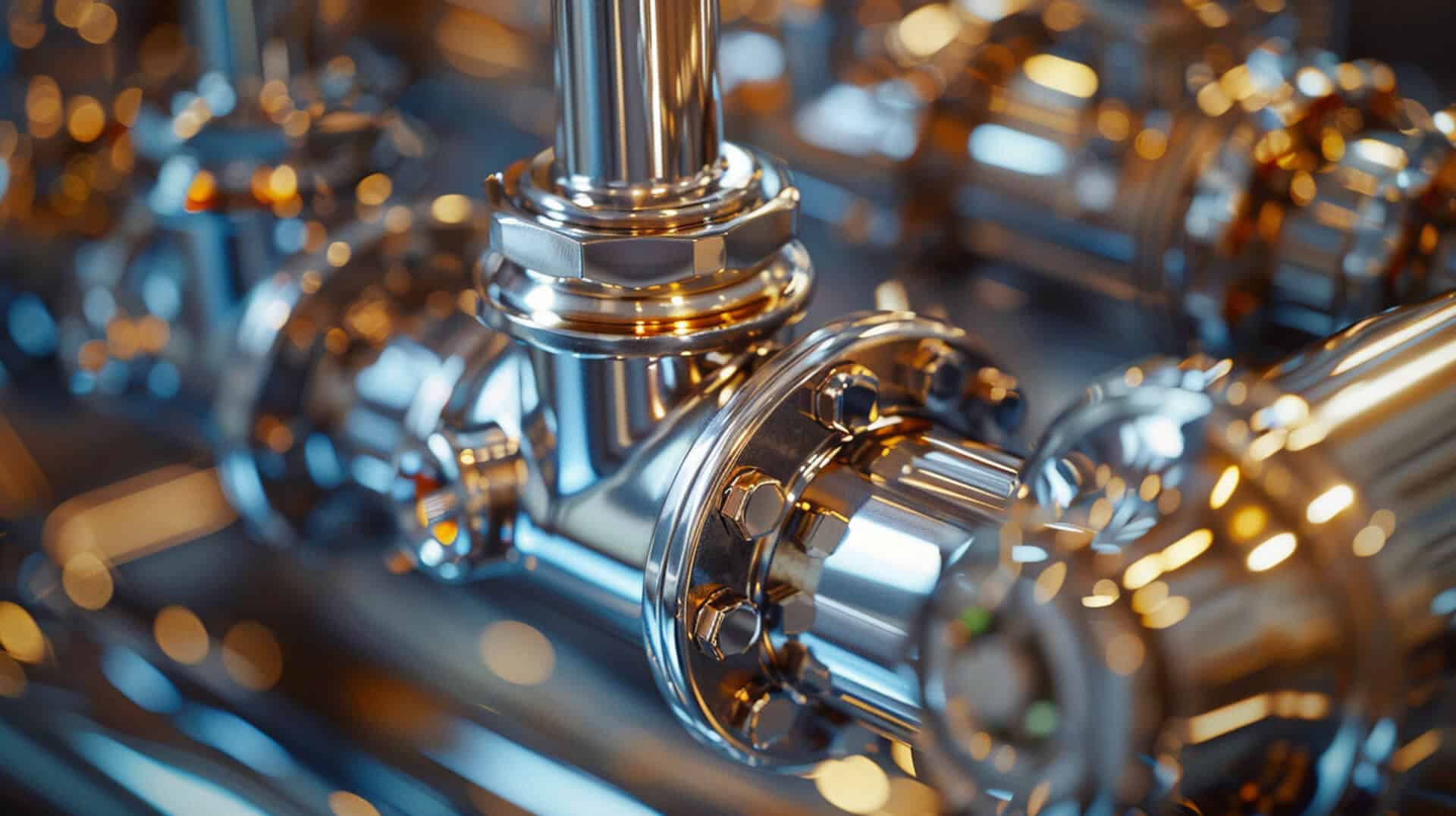
After a professional survey has identified corrosion in drain pipes, several strategies can be employed to manage and mitigate the issue effectively.
Corrosion Control Strategies
Post-survey, corrosion control strategies may include:
- Applying rust inhibitors to slow down the corrosion process.
- Installing moisture barriers to protect pipes from environmental factors that contribute to corrosion.
- Implementing cathodic protection, a technique used to prevent metal corrosion by making it the cathode of an electrochemical cell.
Maintenance and Replacement Options
Depending on the survey findings, maintenance and replacement options may vary:
- Minor corrosion might only require localised repairs or partial replacement of affected sections.
- Severe corrosion could necessitate a complete system overhaul using materials resistant to corrosion, such as PVC or PEX.
Benefits of Water Treatment Systems
Water treatment systems and pH adjustment methods are beneficial for:
- Neutralising the acidity or alkalinity of water, which can prevent the aggressive corrosion of pipes.
- Removing excess minerals that contribute to scale buildup and corrosion.
Contribution to Long-Term Plumbing Health
These solutions contribute to the long-term health of plumbing systems by:
- Extending the lifespan of the pipes.
- Ensuring the delivery of clean, safe water.
- Reducing the likelihood of future leaks and costly repairs.
By addressing corrosion proactively, you can maintain the functionality and integrity of your plumbing system, ensuring it remains reliable for years to come.
Implementing a Comprehensive Corrosion Management Plan
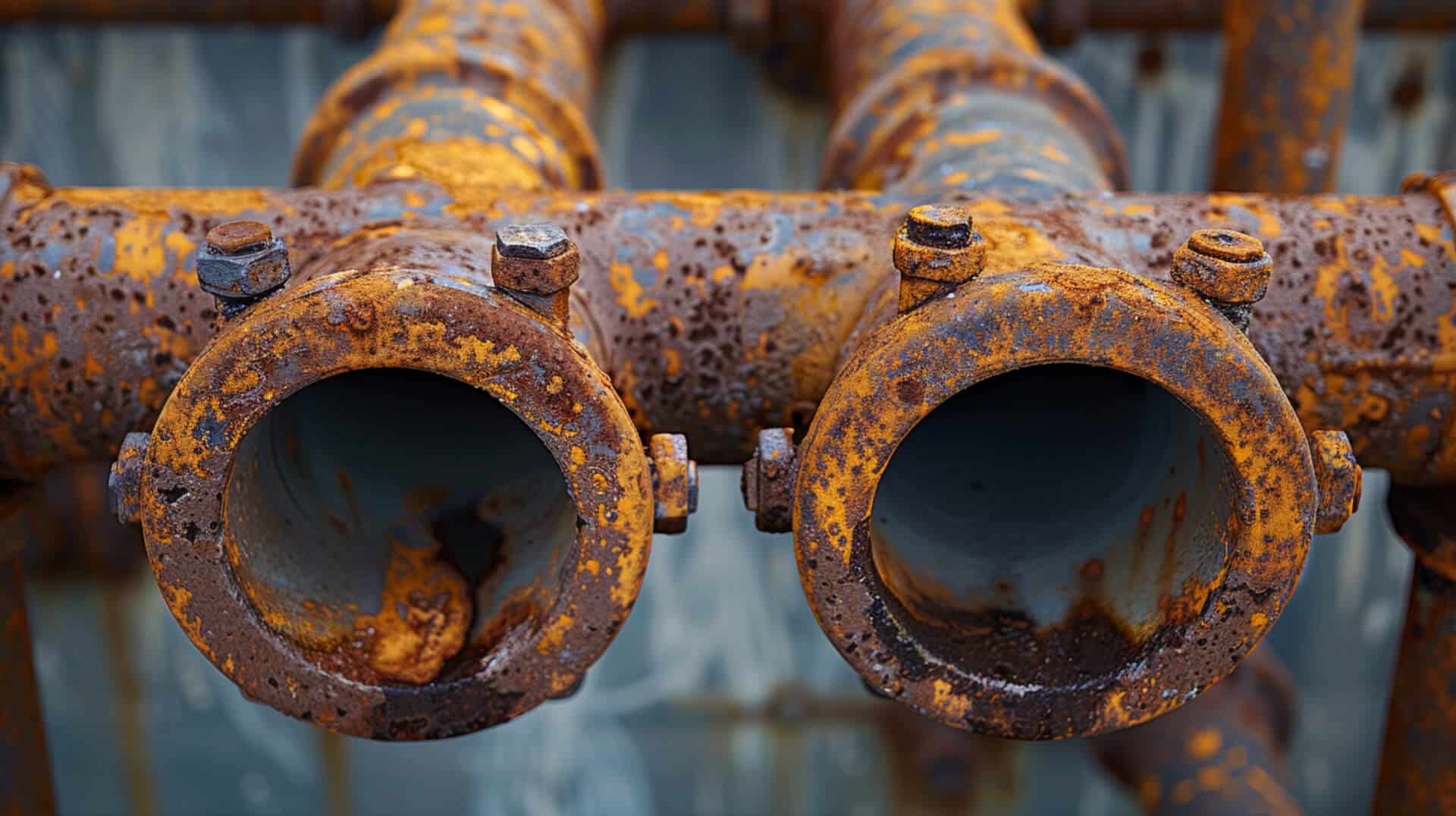
Developing a corrosion management plan is a strategic approach to maintaining the integrity of plumbing systems. Property owners can create an effective plan by utilising the results of professional surveys and incorporating regular maintenance schedules.
Developing a Plan from Survey Results
After receiving the results of a professional plumbing survey, you can develop a plan that addresses the specific issues identified. This plan should include:
- Prioritised actions based on the severity of the corrosion.
- Scheduled repairs or replacements for the most affected areas.
- Budgeting for immediate and future maintenance needs.
Role of Regular Inspections and Maintenance
Regular inspections and maintenance are the cornerstones of effective corrosion management. These practices should include:
- Routine checks for early signs of corrosion.
- Preventative measures, such as the application of rust inhibitors.
- Consistent cleaning to prevent debris buildup that can accelerate corrosion.
Integrating Corrosion-Resistant Materials
Incorporating corrosion-resistant materials into any repair or replacement project is essential. Materials like PVC, PEX, or copper can significantly reduce the rate of future corrosion, contributing to the longevity of the plumbing system.
Benefits of a Proactive Approach
A proactive approach to corrosion management offers numerous benefits, including:
- Minimising the risk of unexpected plumbing failures.
- Extending the lifespan of the plumbing infrastructure.
- Reducing long-term costs associated with emergency repairs and water damage.
By following these guidelines, property owners can ensure their plumbing systems remain functional and safe, avoiding the pitfalls of unchecked corrosion.
The Importance of Corrosion Management in Property Maintenance
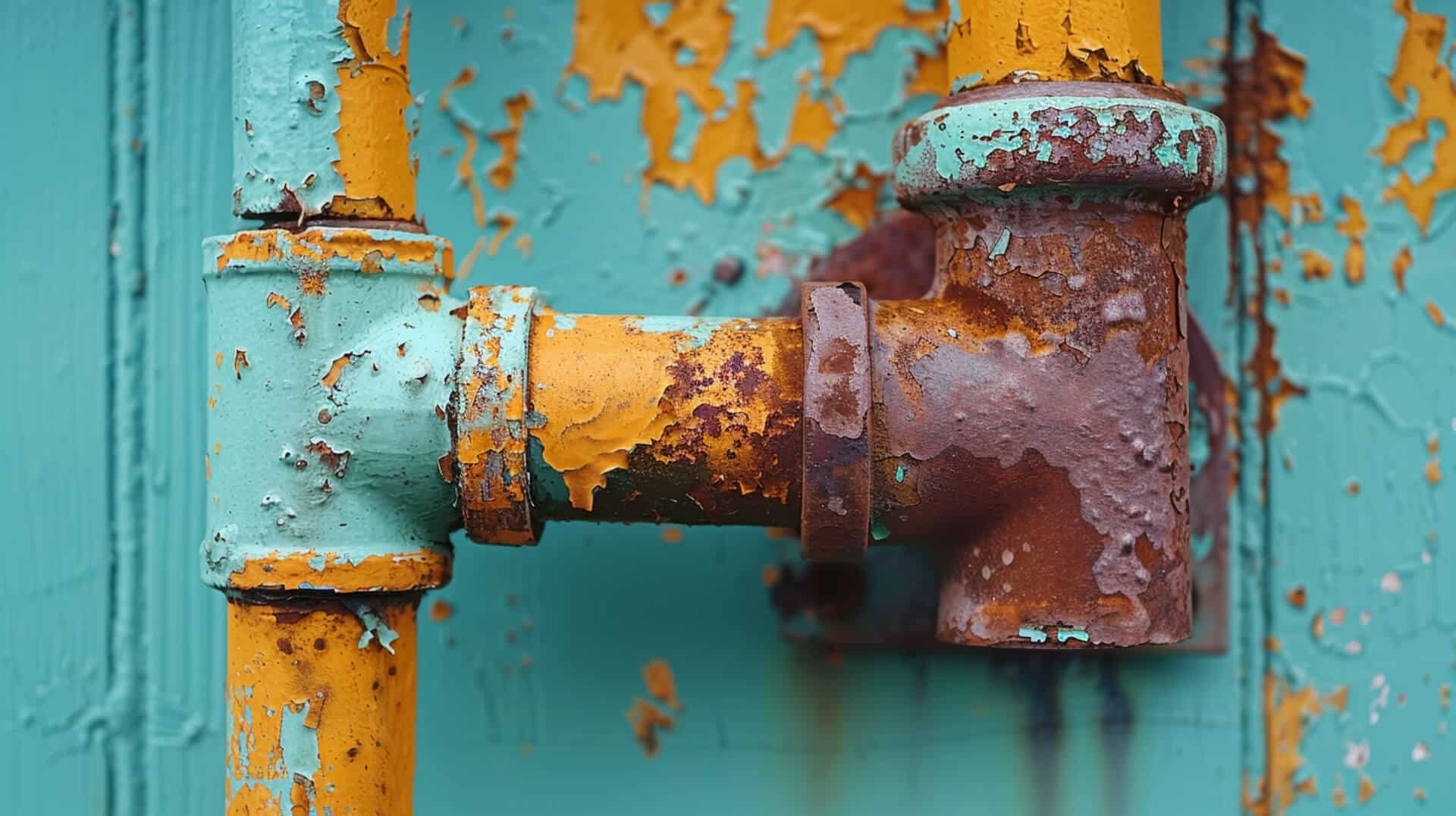
Understanding and addressing drain pipe corrosion is a critical aspect of property management. Corrosion can lead to significant property damage and health hazards if not managed properly.
The Role of Professional Surveys in Corrosion Detection
Professional surveys are a foundational step in corrosion management. They provide a detailed assessment of the plumbing system’s condition, allowing for informed decision-making regarding maintenance and repairs.
Long-Term Benefits of Proactive Corrosion Management
Proactive corrosion detection and management offer long-term benefits, including:
- Preventing costly repairs: Early detection of corrosion can save substantial repair costs and property damage.
- Ensuring system longevity: Regular maintenance and use of corrosion-resistant materials can extend the life of plumbing systems.
- Safeguarding health: Addressing corrosion promptly can prevent water contamination and associated health risks.
Ensuring Plumbing System Longevity and Safety
Property owners, business owners, and facility managers can ensure the longevity and safety of their plumbing systems by:
- Conducting regular inspections: This helps in early detection of potential issues.
- Implementing a maintenance plan: A structured plan based on professional survey results can guide ongoing maintenance efforts.
- Choosing quality materials: Investing in corrosion-resistant materials during repairs or installations can prevent future issues.
By taking these informed actions, stakeholders can maintain the integrity and functionality of their plumbing systems, ensuring a safe environment for occupants and visitors.
